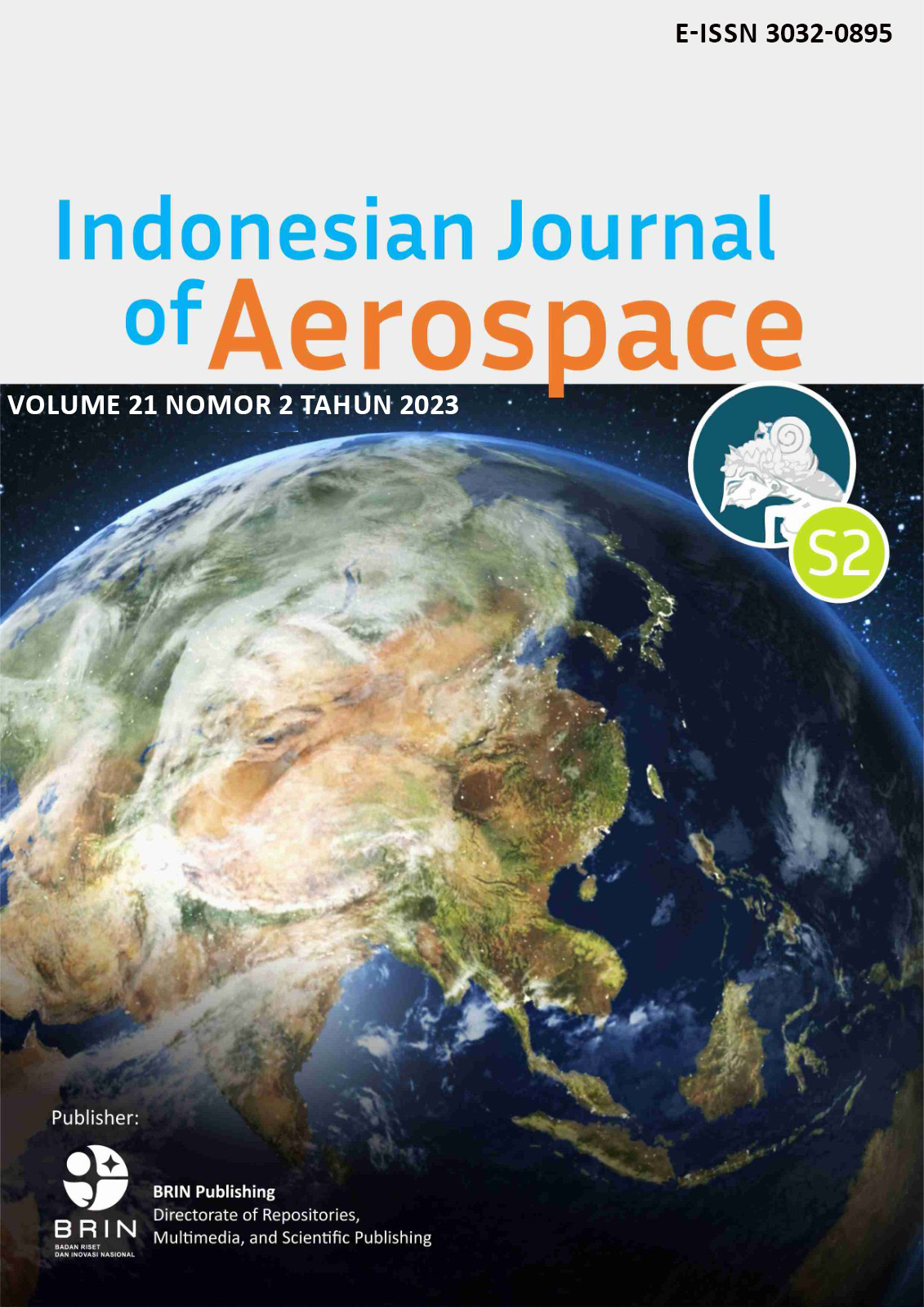Design of Mini Turbojet Engine Combustion Chamber Liner With 200N Static Thrust
DOI:
https://doi.org/10.55981/ijoa.2023.38Keywords:
Mini turbojet, liner design, recirculation zone, air mass flow, pressure lossAbstract
Design of mini turbojet engine with 200N static thrust at an air mass flow of 0.55kg/s, requiring annular type combustion chamber with liner capability of dividing the air mass flow in the primary zone by 20%, secondary zone 30%, dilution zone 50%, and with 4%- 10% pressure loss. In the primary zone, it is necessary to have a recirculation zone that will become a stable combustion place. Liner geometry is obtained by analytical and empirical calculations, that is validated by numerical simulations at cold flow steady conditions. Analytical and empirical calculations resulting in the primary, secondary, and dilution zone respectively: the hole diameter: 2.153mm, 2.503mm, 5.005mm; number of holes: 44, 52, 44 holes; the distance of hole from inlet liner: 28.5mm, 47.5mm, 113.6 mm; air mass flow rates: 19.4%, 29.6%, 50%, and the pressure loss of the combustion chamber is 4%. The numerical simulation is performed by using the turbulent k-e model (extended wall) and has a difference resulted with analytical and empirical calculations on mass flow in the primary, secondary, and dilution zone: 3.44%, 9.09%, 8.88%, and the pressure drop is 10.86%. The recirculation zone that is fulfil injector placement criteria formed in the primary zone at the longitudinal cross-section position (q) from 32.72o to 360o with 32.73o in increment, with horizontal (H) and vertical (V) distance from inner liner wall are varies from 34 to 40 mm for H, and from 35 to 43 mm for V with outer recirculation tangential velocity variation from 43 to 60 m/s.
Downloads
Published
How to Cite
Issue
Section
License
Copyright (c) 2023 Rais Ryacudu Santoso, Vicky Wuwung, Reina Fadjrin Nurul Annisa, Radi Suradi Kartanegara

This work is licensed under a Creative Commons Attribution-ShareAlike 4.0 International License.





